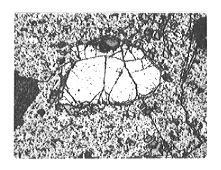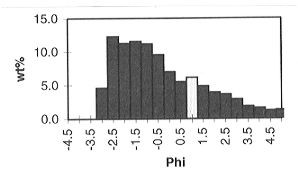

The latest period of volcanic activity at Unzen volcano, Japan, occured at Fugendake and lasted from 1990-95. During the activity a series of quite different eruptive processes ocurred including phreatic eruptions, vulcanian-style activity as well as dome growth associated with block-and ash flows generated by gravitational instability. Throughout this activity Fugendake generated geochemically homogenous crystal-rich dacite lavas and ejecta. A central feature of the dome growth was the effusion of 13 discrete lava lobes during exogenous growth and several stages of endogenous growth. Both types of growth generated block-and ash-flows (responsible for a death toll of 43). Directed down-slope growth of lobes initiated the gravitational collapse of the rock and sent block and ash flows predominatly in an easterly direction into the Mizunashi valley. The Senbongi valley north-east to the edifice was also partially filled with these pyroclastic materials.
In order to understand better and to quantify the physico-chemical parameters influencing the fragmentation of the dacite to produce Merapi-type block- and ash flows, several samples were taken during a sampling campaign early in 1998. Samples were cut from m³-sized blocks from within pyroclastic flows using a rock saw. Three blocks from the 15.9.1991 block- and ash flow were sampled in the Mizunashi valley and additionally 3 samples were collected from the 24.6.1993 block- and ash flow that traveled down into Senbongi valley. During the field campaign the samples were selected so as to obtain maximum ranges in bubble, crystal and glass content. Different bubble geometries and oxidation state and fragmentation histories of the dacite were also taken into account in the attempt to obtain a representative variety of the volcanic products. The central edifice of the volcano, formed by the spiney 1995 endogenous dome was additionally sampled. These samples reveal the lowest vesicularity. A highly vesicular breadcrust-bomb from the early vulcanian activity was also collected.
The samples were characterized petrographically and image processing bubble-size and bubble-geometry analysis are being conducted. The samples are being fragmented in the "fragmentation-bomb" at temperatures and pressures relevant to magmatic and eruptive processes. The P-T conditions can be adjusted independently (see Annual Report 1997). Grain-size and textural analyses of the fragmentation products yield information about the influence of material differences (physical states) as well as pressure and temperature on the fragmentation process.
The room temperature fragmentation limit of a 24.6.1993 block occurs
at a pressure difference of 4 MPa. At 900°C the fragmentation threshold
of the material with an open porosity of 24 vol% is lowered to an initial
pressure difference of 2.5 MPa. The primary particle distribution derived
by sieving follows the Rosin-Rammler equation and is modified by fragments
of pre-eruptive fragmented crystals (Fig. 3.7-4) with a maximum at the
0.5 - 0.35 mm size range (Fig. 3.7-5).
 |
Fig. 3.7-4:
Pre-fragmented quartz crystal in a microvesicular matrix. The crystal-fragment size distribution reaches its maximum at 0.35 to 0.5 mm. (quartz crystal diameter = 1 mm) |
 |
Fig. 3.7-5:
Particle size distribution of a single experiment on Fugendake dacite at 21°C and 168 bar. The second peak (pale colour) characterizes the grain size maximum of pre-fragmented phenocrysts (Phi = -log2 d; where d is grain size in mm). |

Tel: +49-(0) 921 55 3700 / 3766, Fax: +49-(0) 921 55 3769, E-mail: bayerisches.geoinstitut(at)uni-bayreuth.de
 Previous page
Previous page